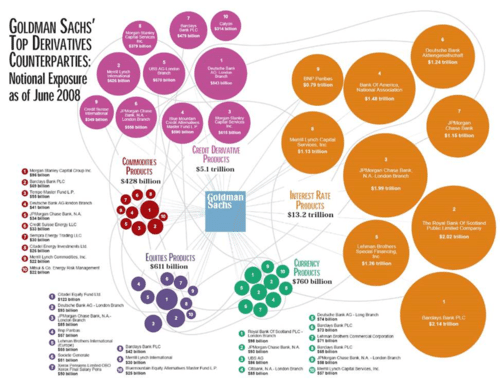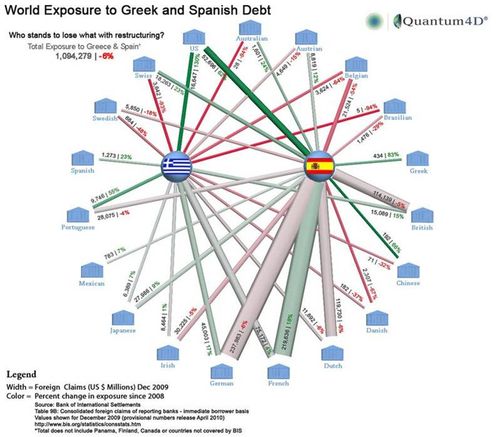
Last night I was presenting to the MAG-net group.
MAG-net is the networking group in the City for the Mines Advisory Group, MAG, a charity supported by the Financial Services Club and others that clears areas of mines so that schools, villages and life can continue as it should in post-war territories.
They invited me to speak about anything I wanted, and so I created a new presentation about the similarities between banks and landmines (see UBS today).
The presentation developed around the idea of banks being mines that explode in economic terms, in a similar way in which landmines explode and blow away people and animals in the real world.
My premise was that just as landmines blow the legs away from humans, banks blow the legs off economies.
It’s obviously the case that this is true today, what with the Lehmans collapse with Credit Default Swaps creating the first financial crisis; and now sovereign debt in the Eurozone is developing the second.
How can such economic landmines exist in a world where we should have cleared them by now?
They exist because we allow innovation in financial instruments in an unregulated form.
That innovation is all around derivatives of derivatives.
Untried and untested weapons of financial destruction are being created every day and planted as hidden potentially unexploded bombs across the financial system.
This has been well documented in many books, with F.I.A.S.C.O. cited by many as a great illustration of the issues in a storybook form or, if you prefer the academic version, Infectious Greed, gives you the lowdown.
These two books by Frank Partnoy document the issues of derivatives, which are both good and bad.
They are good in creating leveraged risk which allows commerce to become more capable. They are good in hedging risk, allowing trades to take place that otherwise could not. They are good in bringing together mixed asset classes, so that previously unrelated goods and services can now be traded together. They are good in offsetting future uncertainty, which is why they are used.
They are bad because they are so complex, most traders don’t understand them. They are bad because they are called ‘exotics’, and are so exotic that they can explode. They are bad because they allow firms, such as Goldman Sachs, to create a massively web of interlinkage between risk that ensures those in their world can have huge exposures whilst Goldmans themselves avoid such loss. They are bad because they allow debt to be leveraged so greatly that it becomes unmanageable.
All of the latter are the landmines of economies, and are no better demonstrated than by Lehmans collapse and Europe’s sovereign debt crisis.
I illustrated these two points with two charts.
The first is from June 2008, and shows the notional exposure of Goldman Sachs’ main counterparties just before the collapse of Lehman Brothers (doubleclick image for larger version): 
Oh what a tangled web we weave, when first we practise to deceive! Sir Walter Scott
Now don’t think I’m Goldman bashing because, as I said last night, they are the most effective bulge bracket player in the world’s markets in creating risk and therefore alpha returns. That’s why their clients use them. However, they are also the most effective institutions in the world’s markets in creating risks that can explode in the face of their clients. That’s why they sell ‘crap’ to their customers (by their own admittance) and are happy to do it.
The second chart I used to illustrate the landmines that firms such as Goldman Sachs lay in the world’s economies is the European sovereign debt crisis and a data visualisation of which countries are most exposed to whom:

Again, derivatives were used to package sovereign debt in the same way as mortgage debt, and has created this second loss of confidence in the European economies.
The whole presentation can be seen here (needs the words to make sense probably) ...
... and the only positive note is that we can save human limbs by clearing landmines using mice to sniff the mines out.
Let’s get some more mice in the financial markets.
Postnote:
In researching the presentation, I found large numbers of images of people with limbs missing. Some were graphic, some were funny, some were moving and many were tragic. Give MAG five minutes of your time http://www.maginternational.org/ to consider supporting them. And any MAG-net member gets a 20% discount if they join the Financial Services Club so it’s worth supporting them for that reason alone surely?
Chris M Skinner
Chris Skinner is best known as an independent commentator on the financial markets through his blog, TheFinanser.com, as author of the bestselling book Digital Bank, and Chair of the European networking forum the Financial Services Club. He has been voted one of the most influential people in banking by The Financial Brand (as well as one of the best blogs), a FinTech Titan (Next Bank), one of the Fintech Leaders you need to follow (City AM, Deluxe and Jax Finance), as well as one of the Top 40 most influential people in financial technology by the Wall Street Journal's Financial News. To learn more click here...

